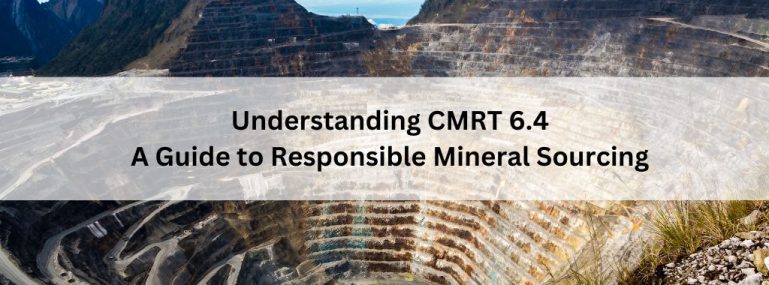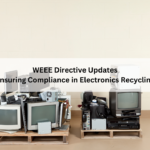The Conflict Minerals Reporting Template (CMRT) plays a pivotal role in enabling companies to uphold responsible mineral sourcing practices throughout their supply chains. With the debut of CMRT 6.4, organizations gain access to refined reporting standards and advanced functionalities tailored to bolster transparency and accountability. In this article, we’ll delve into the significance of CMRT 6.4, highlighting its key enhancements and how businesses can harness its capabilities to advance ethical mineral procurement initiatives.
Developed by the Responsible Minerals Initiative (RMI), the CMRT serves as a uniform reporting framework facilitating the collection and disclosure of data concerning the origins and presence of conflict minerals, such as gold, tin, tantalum, and tungsten, sourced from regions rife with armed conflict and human rights violations.
What’s New in CMRT 6.4:
CMRT 6.4 released on April 26th, 2024, and introduces several updates and improvements to enhance the effectiveness and reliability of mineral reporting. Key features of CMRT 6.4 include:
- Revised Data Requirements: The template includes revised data fields and requirements to capture more detailed information about mineral sourcing practices, smelter and refinery details, and due diligence efforts.
- Enhanced Data Quality: CMRT 6.4 incorporates validation checks and data integrity measures to improve the accuracy and reliability of reported information, helping companies identify and rectify errors or inconsistencies.
- Streamlined Reporting Process: The updated template features improved usability and functionality, making it easier for companies to navigate and complete the reporting process efficiently.
Benefits of CMRT 6.4 Adoption:
Adopting CMRT 6.4 offers several benefits for companies committed to responsible mineral sourcing:
- Enhanced Transparency: By providing comprehensive information about mineral supply chains, companies can enhance transparency and accountability, building trust with stakeholders and consumers.
- Risk Mitigation: CMRT 6.4 enables companies to identify and mitigate risks associated with conflict minerals, ensuring compliance with regulatory requirements, and minimizing reputational and operational risks.
- Supplier Engagement: The reporting process encourages collaboration with suppliers to improve transparency and traceability throughout the supply chain, fostering responsible sourcing practices and promoting positive social and environmental impacts.
- Industry Leadership: Companies that embrace CMRT 6.4 demonstrate leadership in responsible mineral sourcing, setting industry standards and inspiring others to prioritize ethical procurement practices.
To effectively implement CMRT 6.4, companies can follow these steps:
- Assess Reporting Obligations: Determine regulatory requirements and internal policies governing conflict minerals reporting.
- Engage Suppliers: Collaborate with suppliers to collect accurate and complete information about mineral sourcing practices and smelter/refinery details.
- Complete CMRT Reporting: Use CMRT 6.4 to compile and submit mineral reporting data, ensuring compliance with template requirements and validation checks.
- Monitor and Improve: Continuously monitor and evaluate mineral sourcing practices, identify areas for improvement, and implement corrective actions to enhance transparency and responsibility.
CMRT 6.4 represents a significant milestone in the journey towards responsible mineral sourcing and supply chain transparency. By embracing CMRT 6.4 and committing to ethical procurement practices, companies can strengthen their competitive advantage, mitigate risks, and contribute to positive social and environmental outcomes. As businesses navigate the complexities of global supply chains, CMRT 6.4 serves as a valuable tool for promoting accountability, sustainability, and integrity across industries.
FAQs:
- What is CMRT 6.4?
CMRT 6.4 stands for Conflict Minerals Reporting Template version 6.4, released on April 26th, 2024. It’s a standardized reporting template developed by the Responsible Minerals Initiative (RMI) to help companies collect and disclose information about the presence and origin of conflict minerals in their supply chains.
2. What are conflict minerals?
Conflict minerals, including gold, tin, tantalum, tungsten, and now cobalt, are minerals sourced from regions characterized by armed conflict and human rights abuses. These minerals are often used in various industries, including electronics, automotive, and aerospace.





